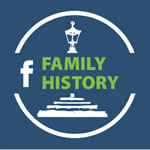Early Cumnock
Cumnock Placename
The name Cumnock has various interpretations of its origin but is so old that no-one could say with certainty which is the correct one. Rev John Warrick in 1899 listed three different possible meanings of the name.
- Com - cnoc meaning hollow of the hills
- Com - oich meaning meeting of the waters
- Cam - cnoc meaning bent or crooked hill
An argument for all of these is possible. Later a fourth meaning emerged – Cumanag, Gaelic for “little shrine”, also credible. Who knows precisely when the name of Cumnock originated?
Early History
It is clear that man has settled these parts of Ayrshire for over 5000 years. A number of Bronze-Age burials, all in cinerary urns, have been found in and around Cumnock. Little remains visible of the late Bronze Age and, similarly, little is known about Roman activity in this part of Ayrshire.
Medieval History
The medieval barony of Cumnock was extensive extending southwards from the River Lugar to Ayrshire’s southern boundary. By the early fourteenth century it was held by the Earls of March and passed to the Dunbars in 1374; they retained control until the seventeenth century. The seat of the barony was at Cumnock Castle, on the site of the present day New Cumnock.
It is believed that a place of worship has existed in the Square of Cumnock, which until recently was the commercial heart of the town, for over 1100 years. However, the earliest historical record dates to 1275 when a tax of £16 Scots, was laid upon the Rectory of Cumnock. This sum was one tenth of the whole ecclesiastical revenue of the parish, for one year, and was to aid Henry III’s troops going on Crusade with Pope Innocent IV in 1254, but Cumnock didn’t pay until 1275.
The earliest recorded patrons of the church in Cumnock were the Earls of March. Existing with a rector, the rectory of Cumnock was converted into a prebend of the Cathedral of Glasgow in the 15th century, with the consent of the patron. The prebendary or canon of Glasgow Cathedral did not live in Cumnock and placed a vicar in situ to represent him.
As had other parishes in Scotland, Cumnock claimed a patron Saint; theirs being St. Conval, the son of an Irish Prince and disciple of St. Kentigern, popularly known as St. Mungo, after whom Glasgow Cathedral is named. It was to St. Conval that the church in Cumnock was dedicated. It may have been that as Cumnock was a prebend of Glasgow Cathedral its church was dedicated to a disciple of the Cathedral’s Saint. The connection remained until the reformation.
In September 1589 James IV created Cumnock, a burgh of barony. The purpose of setting up a burgh was for the King to favour an important subject, in this case James Dunbar of Cumnock, with a local market.
The creation of the burgh allowed inhabitants to buy and sell goods, have an annual fair and collects dues. The town was well situated to function as a market centre, being in a strategic position at the junction of the Ayr to Edinburgh route and the road from Glasgow south to Nithsdale and Borders. Known evidence suggests Cumnock was a small but well established community by the seventeenth century. A school had even been established in 1625 when Helen Lockhart endowed it with £20 in her will.
Creating Cumnock as a Burgh in Barony - Granted 1509
Cumnock was granted a Royal Charter in 1509, when establishing a Burgh in Barony at the hands of King James IV.
James, by the grace of God, King of the Scots, to all honourable persons throughout his realm, both among the clergy and laity, greeting.
Know that for the special favour which we bear towards our beloved James Dunbar of Cumnock, for the growth and good government of the barony of Cumnock, especially in the neighbourhood of the parish church of Cumnock, and also for the well-being and civil freedom of our lieges gathered there, we have made and created, and by this our present charter do make and create, the ecclesiastical lands and glebe of the said church of Cumnock, extending to two merk lands of old extent, with the rejoining grounds in the said barony of Cumnock within the county of Ayr, a free burgh in barony to be called the Burgh of Cumnock in perpetuity.
We have likewise granted to the inhabitants of the said burgh, present and future, full power and absolute right to buy and sell in the said burgh wine, wax, pitch and bitumen, woollen and linen cloth, both broad and narrow, wool, skins, oxhides, salt, butter, cheese, and all other kinds of merchandise, together with power and liberty to possess and keep in the said burgh bakers, braziers, tanners, butchers, sellers of flesh and fish, and all other tradesmen belonging to the liberty of a burgh in barony.
We have also granted that in the said burgh there shall be free burgesses, and that the same shall have power in all future time to elect annually bailies and other officers, needful for the government of the said burgh, and that the said bailies and officers shall be elected with the consent of the baron of Cumnock for the time being, and that no officers shall be elected without the approval of the baron, and that the persons chosen as bailies of the said burgh shall reside within the same.
With power to the burgesses and inhabitants within the said burgh to have and maintain within the same, perpetually, a market cross and a market on the Saturday of each week, as well as an annual public fair on the day of St. Matthew the apostle and evangelist, and for eight days thereafter, with right to uplift dues, along with all other privileges which belong to public fairs or may justly be regarded as belonging to them at any time hereafter;
And with power and liberty to our beloved clergyman, Master Thomas Campbell, canon of Glasgow and prebendary of the said church of Cumnock, and to his successors, to feu the aforesaid glebe lands, in whole or in part, in burgh roods for building purposes, in such a way as shall be for the profit of the said church and its prebendaries, or at least without loss to the church, provided the consent of the said baron for the time being is obtained;
The lands of the said church to be held and possessed, as is here set forth, for ever, with all the privileges, liberties, and advantages written above, together with all other benefits, titles, and rights which pertain to a free burgh in barony or may justly be regarded as pertaining thereto in the future, and that as freely as any burgh in barony is given in fief within our kingdom by ourselves or our predecessors without any impediment or revocation whatever;
Saving, however, and reserving to the said James and his heirs, the barons of Cumnock, their own liberty and their right to hold a court within the barony of Cumnock, together with the privilege of blood and bloodwite in the same court over the inhabitants of the said glebe, to be enjoyed, used, and exercised by them and their bailies in the future according to the tenor of their infeofment, ancient usage, and general custom;
In testimony whereof we have ordered to be affixed to our present charter our great seal in the presence of the following witnesses:
Alexander, Archbishop of St. Andrews, Chancellor;
William, Bishop of Aberdeen, Keeper of Privy Seal; Andrew, Bishop of Caithness, Treasurer; Archibald, Earl of Argyll;
Matthew, Earl of Lennox;
Andrew, Lord Gray;
Master Gavin Dunbar, Archdeacon of St. Andrews; Master Patrick Pauntere, Secretary;
Richard Colville of Ochiltree.
At Edinburgh, the 27th September 1509,
and the twenty-second of our reign.
The Great Seal of the King of Scotland was affixed.
The Charter granted Cumnock a Market Cross and the right to establish weekly markets and Fair Days to which merchants could come from any distance in pursuit of trade.
As the centuries passed Cumnock grew and experienced all that was common to other small communities hoping to benefit from their newly acquired nobility.
Eighteenth Century
By the mid 18th Century the settlement continued to extend out along Townhead although its centre remained near the church. We know that the area surrounding the church was a graveyard and it has been suggested that the merchant dwellings on the south side of the graveyard faced onto a thoroughfare called Back Street, now Tower Street. The layout of some buildings currently surrounding The Square suggests that they are 18th century in origin, having been rebuilt during the 19th century.
Nineteenth Century
Road arriving at the north east corner of the churchyard, the Ayr Road from the south west and the extension of Glaisnock Street from the south east. It is clear that although there have been some changes to this basic street pattern this post Medieval pattern remains to this day.
It was in 1775 when a bridge was built across the Glaisnock just south of The Square that a more direct access to New Cumnock via Glaisnock stream could be achieved and a new road to Ayr was created.
Several occupations were undertaken by the people living in Cumnock these included weaving, shoemaking, tanning and dyeing. These were later supplemented by coal mining and mineral extraction. The discovery of a rare mineral graphite near Cumnock led to the manufacture of pottery in the area.
Mineral extraction and ceramic manufacture continued into the 19th century on a moderate scale and were supplemented later on by the manufacture of snuff boxes. This reached its heyday in 1820-1830 when over 100 people were employed in the industry.
Cumnock continued to remain a centre for local marketing. Market days were held and the appearance of retail shops, banks and improved communications, supported industrial and commercial activity in Cumnock. The Annual Fair remained the major event in Cumnock life and the main function of which was to provide a venue for the sale of local agricultural produce and livestock. In 1866 Cumnock became a Police burgh, many environmental improvements, essential for the community, were made as it changed from a small market town to an industrial centre. The decline of coal mining in the area during the 20th century had a profound effect on life in Cumnock.






